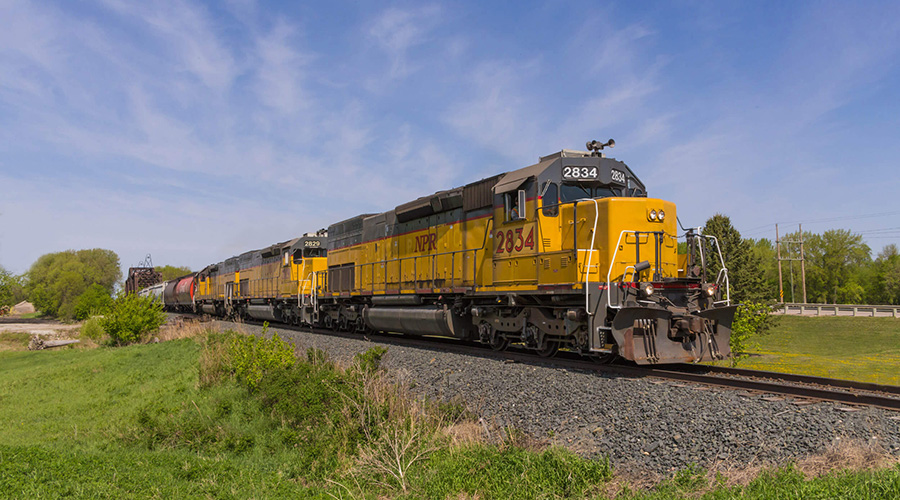PSR can be a plus for short lines, Northern Plains Rail's Mack says
7/19/2021
By Jeff Stagl, Managing Editor
All Class Is that either have adopted or continue to implement precision scheduled railroading (PSR) are reaping efficiency and productivity benefits from it. But what about the short lines that interchange with those Class Is?
At the Midwest Association of Rail Shippers summer meeting on July 13, Dan Mack tackled the subject of PSR as it relates to short lines. The executive vice president of finance, marketing and sales for Northern Plains Rail Cos. (NPRC), Mack described short lines’ role in PSR, the benefits they can derive from it and how small railroads can embrace the operating model in the future.
CN blazed the trail with PSR while the other Class Is have been on a multi-year journey to adopt it, he said. PSR’s key principles are service consistency, cost controls, asset optimization, safer operations and worker development.
There are 603 U.S. short lines, which is a significant number, Mack said. Their route miles (totaling 47,500) account for 29% of all U.S. track miles. Short lines handle one in five rail cars and average 79 miles operated per railroad.
NPRC's Northern Plains Railroad operates about 350 miles of track in North Dakota and northwestern Minnesota, and is heavily involved in the agricultural space, said Mack, who previously served CHS Inc. for 20 years and was a commercial account manager for grain at Canadian Pacific.
Short lines’ role in PSR varies depending on their location and other factors. Generally, small railroads can serve as an ambassador and supporter of change, Mack said. They have the opportunity to show a willingness to adapt and adjust to the operating model, remain focused on local service, buffer impacts and fill voids, sustain market share and provide a pro business/pro rail atmosphere for industrial development, he added.
 Northern Plains Railroad operates about 350 miles of track in North Dakota and northwestern Minnesota, and is heavily involved in the agricultural space, Mack told MARS attendees. Northern Plains Rail Cos.
Northern Plains Railroad operates about 350 miles of track in North Dakota and northwestern Minnesota, and is heavily involved in the agricultural space, Mack told MARS attendees. Northern Plains Rail Cos.“Short lines can help customers maintain a local focus and keep their attention on rail,” Mack said. “They can help them understand that the model will evolve. The PSR model has made us better and more focused, and has added capacity.”
The benefits that short lines can derive from PSR include reduced dwell time, greater service consistency and transparency, and additional capacity. The operating model can better position them for reinvestments, such as for cars, mainline capacity and technologies. PSR tends to inspire innovations, Mack said.
In addition, short lines can obtain enhanced metrics and use crews in more efficient ways. PSR supports unit train models, which is good for ag, Mack said.
However, there are some PSR downsides for short lines, including impacts to their business during the implementation stage. Short lines also might lose some institutional knowledge as they reduce headcount and change some roles, depending on how they manage resources and assets, said Mack.
“It can impact their responsiveness to market signals and competitive factors,” he said. “The financial benefits also aren’t as proportional to short lines because they don’t have the same scale as Class Is, so the magnitude is different.”
To play a role in PSR in the future, short lines need to be an active participant and maintain their local focus and presence, Mack said.
“Be a customer advocate. Help them solve their rail problems,” he said.
Short lines also can assist Class Is with market intelligence.
“There are 603 of them out there, so that’s a lot of intel,” Mack said.


